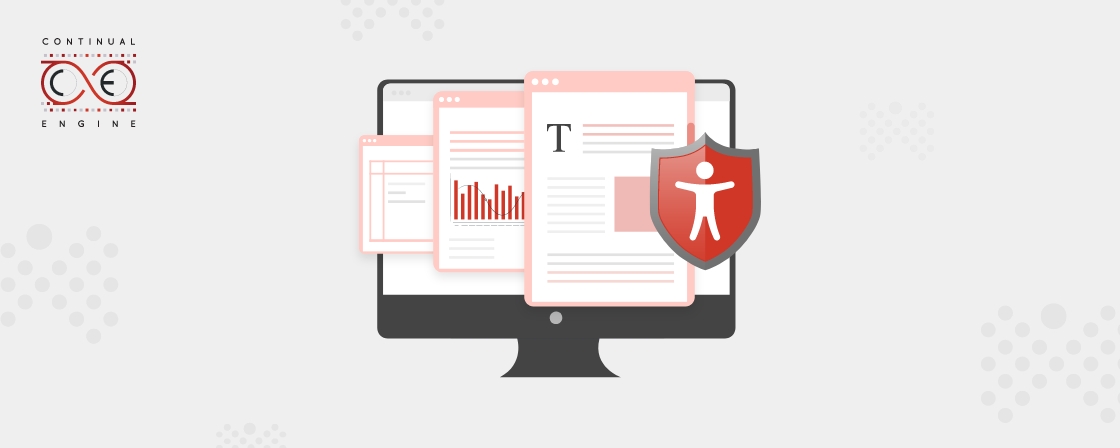Understanding Section 752
Under the Consolidated Appropriations Act of 2023, Section 752 is a legislative provision that sets out stringent requirements for digital accessibility. Its primary purpose is to ensure that information and communication technology (ICT) used by federal agencies and beyond is accessible to all, including individuals with disabilities.
Section 752 entrusts the U.S. Access Board, the General Services Administration (GSA), and the Office of Management and Budget (OMB) with the responsibility of establishing reporting criteria. The trio plays a pivotal role in defining the standards that organizations must meet to achieve compliance.
It is essential to clarify that Section 752 does not introduce new ICT accessibility standards. Instead, it builds upon the existing framework established by Section 508 of the Rehabilitation Act. This underscores the importance of understanding Section 752 and its predecessor, Section 508, to ensure comprehensive compliance.
The Importance Of Section 752
One of the most impactful aspects of Section 752 is the public availability of agency responses. This transparency ensures that organizations remain accountable not only to regulators but also to the public. It is a compelling incentive to take accessibility seriously.
Reporting Requirements Of Section 752
One of the key features of Section 752 is the comprehensive 105-item questionnaire. This questionnaire covers a wide array of aspects related to digital accessibility, making it a robust tool for evaluating compliance.
The questions in the Section 752 questionnaire are categorized into two main areas: organizational processes and conformance metrics.
Organizational Process
- Accessibility Testing: Organizations must outline their approach to testing the accessibility of their digital properties.
- Tracking And Remediation: How organizations track and remediate accessibility issues is under scrutiny.
- Impact On Hiring And Retaining: Section 752 assesses how organizations incorporate accessibility into their hiring and retention processes.
- Governance, Accountability, Procurement, And Feedback: These are key organizational processes influencing accessibility.
- Accessibility Guidance: Providing guidance, templates, and tools for employees.
- Accessibility Knowledge And Skills Development: Demonstrating a commitment to ongoing improvement.
Conformance Metrics
- Evaluation Of Digital Properties: This involves the assessment of public web pages, intranet pages, electronic documents, and videos.
- Assessment Of Other Digital Systems And Assets: This extends to applications, platforms, and documents that may not be public-facing but are crucial for internal operations.
Section 752 Beyond Federal Agencies
While Section 752 originated within federal legislation, its applicability extends far beyond the government. Private sector organizations are not immune to its reach. Any entity that wishes to engage with federal agencies or receive federal funding must adhere to these accessibility standards.
Including private sector organizations within the purview of Section 752 is a significant development. It means healthcare, education, and technology businesses must take accessibility seriously. The potential impact on these organizations is profound from a compliance and reputational perspective.
Section 752 catalyzes broader adoption of accessibility practices. As private sector organizations align their operations with these standards, accessibility becomes more mainstream, benefiting individuals with disabilities.
Consequences Of Non-Compliance
Reputational Damage
Legal Consequences And Liabilities
Beyond reputational damage, there are legal consequences for non-compliance. Fines, sanctions, and the exclusion of federal contracts or funding are all potential outcomes. These penalties can have severe financial repercussions.
Case Study Illustration
Consider a hypothetical case study of a tech company that failed to meet Section 752 standards. The ensuing legal battles, negative media coverage, and loss of lucrative contracts underscore the dire consequences of non-compliance.
Opportunities for Digital Accessibility Advancement With Section 752
Origins And Inclusion
Standardizing Digital Accessibility Measures
Highlighting Areas For Improvement
Section 752 reporting can also highlight areas for improvement, such as refining contract language to ensure third-party vendors comply with accessibility standards.
Accessibility Requirements Tool
Resources like the Accessibility Requirements Tool can assist organizations in meeting Section 752 requirements efficiently.
How To Use Section 752 As A Model For Real Change
Addressing Concerns
Some organizations may have concerns about the reporting model. It is essential to address these concerns constructively and work toward solutions that benefit everyone.
Importance of Honest Reporting
Honesty in reporting is paramount. It’s not just about checking boxes; it’s about genuinely embracing accessibility as a core value.
Setting Annual Goals
Role of Advocacy Groups
Meeting The Federal Government Reporting Requirements Of Section 752
Compliance Deadline Reminder
Role Of The General Services Administration
The General Services Administration plays a pivotal role in facilitating compliance. Organizations should engage with GSA resources to streamline their efforts.
Getting Started
To meet the Section 752 questionnaire’s requirements, organizations should start by conducting thorough accessibility assessments, remediate issues, and develop comprehensive accessibility policies.
Final Thoughts
Section 752 is a watershed moment in the journey toward digital accessibility. Its far-reaching implications demand that public and private organizations take accessibility seriously. The consequences of non-compliance are severe, but the opportunities for progress are immense. By embracing Section 752 as a model for real change, organizations can ensure that their digital spaces are truly inclusive, reflecting the inclusive world we all strive to create.
Continual Engine’s commitment to artificial intelligence (AI)-powered accessibility solutions perfectly aligns with the spirit of Section 752. Through sophisticated technology and human expertise, we are driving the transformation of learning and accessibility.
